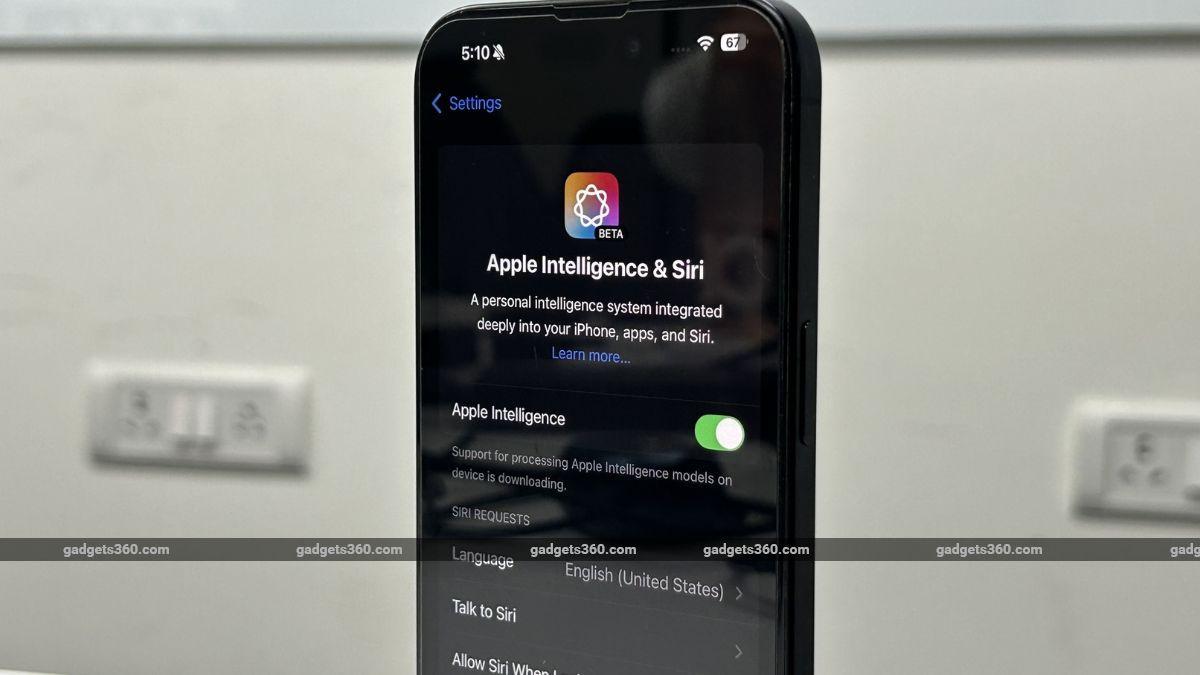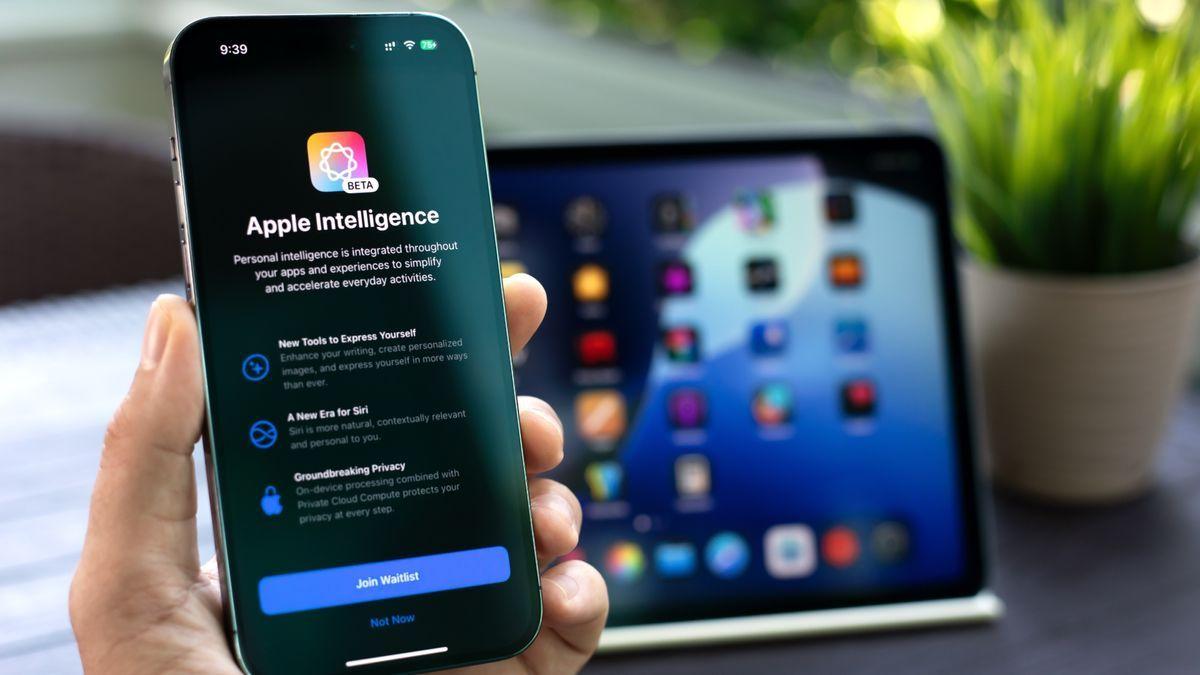Apple to Open AI Models to Third-Party Developers, Boosting App Ecosystem
4 Sources
4 Sources
[1]
Report: Apple plans to make its large language models available to developers - SiliconANGLE
Report: Apple plans to make its large language models available to developers Apple Inc. plans to let third-party developers build applications using its large language models, Bloomberg reported today. The company is expected to announce the initiative at its upcoming WWDC conference. Last year, Apple rolled out a suite of artificial intelligence features called Apple Intelligence to iPhones and Macs. The capabilities are powered by a series of internally-developed models known as Apple Intelligence Foundation Models. According to Bloomberg, the iPhone maker plans to make some of those models available to developers via a "software development kit and related frameworks." Currently, Apple Intelligence lends itself to a fairly limited number of tasks. The technology can rewrite text on the user's display, proofread it and generate images based on natural language prompts. There's also a tool for summarizing notifications. It's unclear why developers might use Apple's LLMs instead of the numerous alternatives on the market. Microsoft Corp. offers a family of open-source language models, the Phi series, that can run on hardware-constrained devices such as iPhones. Some of the algorithms in the model lineup are optimized for reasoning, which Apple Intelligence currently doesn't support. One way the iPhone maker could differentiate its models is by making them easier to use. Apple might, for example, offer prebuilt guardrails that filter inaccurate AI output. The company could also integrate the LLMs with its Core ML framework. It's a tool that enables developers to incorporate third-party neural networks into iOS and Mac applications. Many software teams are already familiar with Core ML, which means that integrating it with Apple Intelligence's LLMs could make them easier for developers to adopt. Some of the models that power Apple Intelligence run on users' devices while others are hosted in the cloud. According to Bloomberg, the iPhone maker will initially only make the on-device algorithms available to developers. It's unclear whether the cloud-hosted LLMs, which are more capable, will follow suit. Apple detailed one of Apple Intelligence's on-device language models at last year's WWDC. According to the company, the model includes about three billion parameters. In an internal Apple test, it outperformed an open-source language model with more than twice as many parameters across most tasks. According to the company, Apple Intelligence's LLMs can learn new skills using so-called adapter layers. Those are artificial neurons that can be trained separately from an LLM's core components. Adapter layers make it possible to optimize an AI model for new tasks for a fraction of the cost of retraining it from scratch or building a new neural network. This year's WWDC event could also see Apple debut other AI tools for developers. Earlier this month, Bloomberg reported that the iPhone maker has teamed up with Anthropic PBC to build an LLM-powered programming assistant. The tool is set to ship with Xcode, an Apple-developed code editor for building iOS and Mac applications.
[2]
Apple Might Unlock Its AI Models for Developers at WWDC 2025
Initially, Apple will reportedly let developers access its smaller models Apple is reportedly planning to let third-party developers build apps using its proprietary artificial intelligence (AI) models. As per the report, the Cupertino-based tech giant wants to open its AI model, which also powers Apple Intelligence features, in hopes that more AI-powered apps appear on its marketplace. With more apps that use AI capabilities, the company is said to believe that it could invigorate consumer interest in devices that offer Apple Intelligence. The announcement regarding this will reportedly be made at the Worldwide Developer Conference (WWDC) 2025. According to a Bloomberg report by Mark Gurman, the tech giant is working on a new software development kit (SDK) and associated frameworks that will let third-party developers either build new AI-powered apps or integrate AI features in existing apps. Citing unnamed people familiar with the matter, the publication highlighted that this new SDK could be unveiled at WWDC 2025, scheduled for June 9. Apple might start with opening its smaller language models (SLMs), and later allow access to its larger, foundation models, as per the report. These models are already powering several Apple Intelligence features in iOS and macOS, such as Writing Tools, Image Playground, and Genmoji. With the new SDK, third-party developers are also said to introduce similar features in their apps. Third-party developers making new AI-powered apps also help the company in the long run. Currently, the iPhone maker is struggling to push out enough practical AI features to increase the adoption of Apple Intelligence. The long-awaited AI-powered Siri is still under development and has faced multiple delays. A recent report now claims that the company might not discuss Siri upgrades at WWDC at all. Apart from this, the tech giant is also expected to showcase new features in the next iteration of iOS, macOS, and other operating systems. One such feature in iOS 19 could be a new AI-powered battery management mode. It is said that the feature collects data from users' phones to gauge behavioural patterns, and subsequently allocates power efficiently and increases battery life.
[3]
Apple to open its AI models to developers: Report
Apple is preparing to allow third-party developers to write software using its artificial intelligence models, in a push to boost the creation of new applications, Bloomberg News reported on Tuesday, citing people with knowledge of the matter. The tech major is working on a software development kit and related frameworks that would allow outsiders to build AI features based on the large language models that the iPhone maker uses for Apple Intelligence, the report said. Apple Intelligence - the company's own set of AI features, including capabilities such as rewriting emails, summarizing notifications and editing photos - was rolled out last year. The company expects to unveil the plan at its Worldwide Developers Conference on June 9, Bloomberg said. Apple did not immediately respond to a Reuters request for comment. Opening up its AI models would let developers integrate the underlying AI technology into specific features or across their full apps, Bloomberg reported. Apple will begin with opening up its smaller models that run on its devices, rather than the more advanced cloud-based AI models that require servers, the report added. The move could help Apple, viewed by some analysts as a laggard in AI, compete against rivals, such as Samsung Electronics, that have spruced up their devices with features powered by the likes of Google. It could also boost the appeal of Apple Intelligence among developers and users, after a roll-out marked by delays. Developers have so far been able to integrate Apple's AI tech into their applications, but have not been able to use Apple's AI models to develop and power their own AI features. (Reporting by Deborah Sophia in Bengaluru; Editing by Alan Barona)
[4]
Report: Apple to Let Third-Party Developers Use Its AI Models | PYMNTS.com
Apple did not immediately reply to PYMNTS' request for comment. By expanding its AI technology to developers, the company hopes to encourage the creation of new applications that will increase the use of Apple Intelligence and make its products the devices of choice for AI application, according to the report. Apple plans to start this program with the small AI models that run on its devices before expanding it to the larger ones that are cloud-based, per the report. The company announced its rollout of Apple Intelligence, its suite of AI-powered features, in September with the launch of its iPhone 16 lineup, saying it would be gradually released starting in October with iOS 18.1 in the United States. In January, it was reported that Apple disabled AI-generated news summaries on the beta version of iOS 18.3 after earlier updates failed to stop the feature from incorrectly summarizing news articles or simply making up information. Despite this and other problems around AI features, Apple CEO Tim Cook said during a January earnings call that the iPhone 16 models performed stronger in markets where Apple Intelligence features were available, showing that the technology drove demand. According to Tuesday's Bloomberg report, Apple's Worldwide Developers Conference is also expected to see the launch of new operating systems for the iPhone, iPad and Mac that will be similar to the one used on the Vision Pro headset. It was reported in March that the company was planning to make the biggest changes to its operating systems in years, aiming to make them simpler to navigate and more consistent across its devices. The revamp of the operating systems will reportedly include the style of icons, menus, apps, windows and system buttons; simpler ways to navigate and control the devices; and innovations introduced on the Vision Pro.
Share
Share
Copy Link
Apple plans to make its large language models available to third-party developers, potentially announced at WWDC 2025, to encourage AI-powered app creation and increase Apple Intelligence adoption.
Apple's AI Strategy Shift: Opening Models to Developers
In a significant move to bolster its artificial intelligence (AI) ecosystem, Apple Inc. is reportedly planning to make its large language models (LLMs) available to third-party developers. This initiative, expected to be announced at the upcoming Worldwide Developers Conference (WWDC) in June 2025, marks a strategic shift in Apple's approach to AI integration
1
2
.Apple Intelligence and Developer Access
Apple Intelligence, the company's suite of AI features introduced last year, is powered by internally-developed models known as Apple Intelligence Foundation Models. The tech giant now aims to provide developers with access to these models through a new software development kit (SDK) and related frameworks
1
3
.
Source: Gadgets 360
Initially, Apple plans to focus on making its smaller, on-device language models available to developers. These models, which include about three billion parameters, have shown impressive performance in internal tests, outperforming some open-source alternatives with more parameters
1
4
.Potential Advantages and Differentiation
While the market already offers numerous LLM alternatives, Apple could differentiate its offering in several ways:
- Ease of use: Apple might provide prebuilt guardrails to filter inaccurate AI output
1
. - Integration with existing frameworks: The company could integrate its LLMs with the Core ML framework, leveraging developers' familiarity with the tool
1
. - Adapter layers: Apple Intelligence's LLMs can learn new skills using adapter layers, allowing for cost-effective optimization for new tasks
1
.
Implications for App Ecosystem and Device Adoption
By opening its AI models to developers, Apple aims to invigorate its app ecosystem and drive consumer interest in devices offering Apple Intelligence features
2
4
. This move could potentially lead to:- More AI-powered apps in the Apple marketplace.
- Increased adoption of Apple Intelligence features.
- Enhanced appeal of Apple devices for AI applications
4
.
Related Stories
Challenges and Competition
Despite the potential benefits, Apple faces some challenges in this initiative:
- Recent issues with AI-generated news summaries in iOS beta versions
4
. - Competition from other tech giants offering open-source language models
1
. - The need to differentiate its offerings in a crowded AI market
1
.
Future Developments and WWDC 2025
The upcoming WWDC is expected to be a significant event for Apple's AI strategy. In addition to the AI model access announcement, the conference may also feature:
- The debut of other AI tools for developers, including a potential LLM-powered programming assistant developed in collaboration with Anthropic PBC
1
. - New operating systems for iPhone, iPad, and Mac, with a design philosophy similar to the Vision Pro headset
4
. - Possible updates to iOS, including an AI-powered battery management mode in iOS 19
2
.
As Apple continues to evolve its AI strategy, the opening of its models to developers represents a crucial step in maintaining competitiveness in the rapidly advancing field of artificial intelligence
3
4
.References
Summarized by
Navi
[1]
[2]
Related Stories
Recent Highlights
1
Google launches Gemini 3 Flash as default AI model, delivering speed with Pro-grade reasoning
Technology

2
OpenAI launches GPT Image 1.5 as AI image generator war with Google intensifies
Technology

3
OpenAI launches ChatGPT app store, opening doors for third-party developers to build AI-powered apps
Technology








